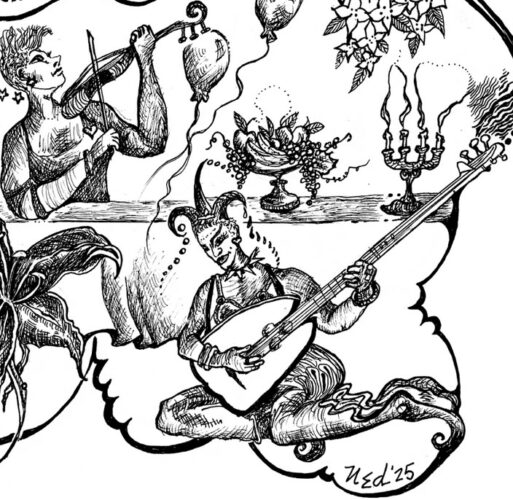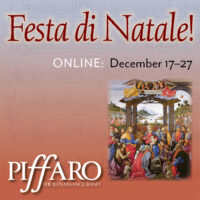by Thomas May
Published August 23, 2025
‘I want to understand how any music was first played and what the composer intended. In that sense, all music is contemporary.’
Period instruments have more ‘soul’ between the notes
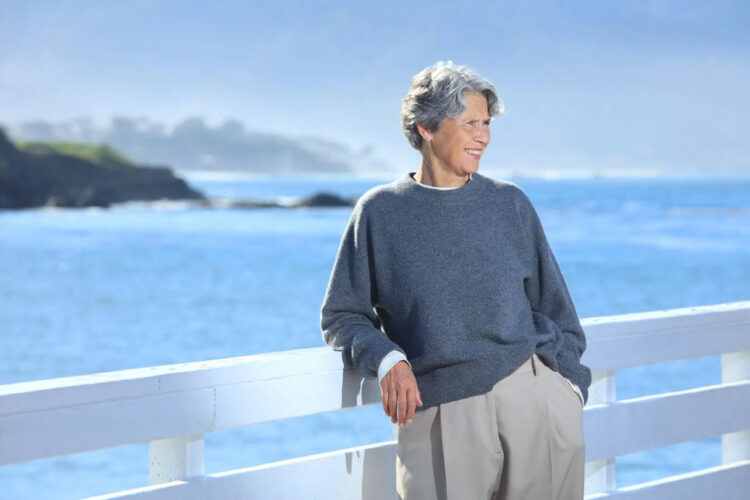
When we met for an interview this summer at the Carmel Bach Festival, Norwegian conductor Grete Pedersen declined the comfort of an office and suggested a walk instead. We left festival headquarters and made our way through the village’s streets of whimsical, storybook architecture before reaching the shimmering white sand of Carmel Beach, where the Pacific stretched endlessly beside us. It was a fitting setting for a conversation about openness, connection, and the unexpected paths that lead to music-making.
When Pedersen took up the post of artistic director and principal conductor of California’s Carmel festival in 2022, she brought with her an unusually wide-ranging perspective. Raised in Sarpsborg, Norway, she trained at the Norwegian Academy of Music, studying organ, church music, and conducting before honing her skills with mentors including Eric Ericson in choral music and Kenneth Kiesler in orchestral conducting.
Before turning fully to music, Pedersen played top-level women’s football (or soccer), earning nine caps with the Norwegian national team in 1980–81, when she was in her early twenties — an experience she credits with instilling the discipline, teamwork, and resilience she now brings to the podium. She is now a serious sailor with a lovely large sloop, docked at home in Oslo harbor.
In 1984, Pedersen founded the Oslo Chamber Choir, which she led for two decades, and in 1990 she became music director of the Norwegian Soloists’ Choir, a position she still holds. Under her leadership, the ensemble has become known for its luminous sound and adventurous programming, spanning early repertoire to brand-new commissions. Her modern-instrument recordings have earned major international honors, including a Diapason d’Or from the prominent French music magazine and high praise from Gramophone Magazine.
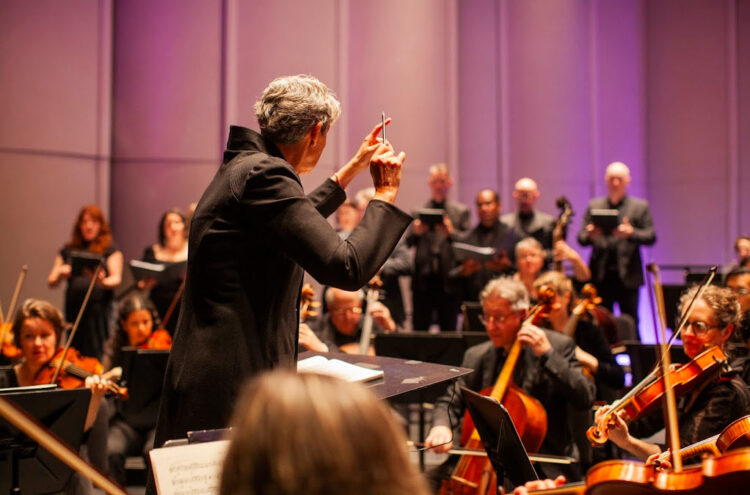
Pedersen’s first encounter with Carmel came in 1999, during a recuperative trip to the United States after a serious cycling accident. Driving the West Coast, she fell in love with the Monterey Peninsula. When the festival invited her to audition in 2022, she stepped onto the podium for Beethoven’s Seventh Symphony and found an immediate rapport with both orchestra and chorus. That year she was appointed the festival’s first female artistic director and principal conductor in its 87-year history.
In her hands, programming becomes a form of dialogue: Bach meets today’s composers, Romantic symphonies gain new colors on period instruments, and staging choices turn performance into exploration. Pedersen relishes the intimacy of Carmel’s venues, the openness of its audiences, and the collaborative spirit of its musicians.
In 2026, Pedersen will add another role to her busy calendar as professor in the practice of conducting and principal conductor of the Yale Schola Cantorum. When we spoke, her focus was on cultivating the Carmel festival’s distinctive balance of tradition and experiment in the musical conversations it puts on stage.
What first drew you to the Carmel Bach Festival?
Funny enough, my first experience here had nothing to do with music. In 1999, after a serious bike accident, I needed time to recover and decided to travel around the U.S. During that trip I met JoAnn Falletta and listened to her rehearsals all week — her work inspired me. I drove up and down the West Coast and fell in love with this area.
Years later, in 2022, I was invited to audition for the festival. I was deeply impressed by both the orchestra and the choir — and, of course, I already loved the place. I hadn’t conducted Beethoven’s Seventh Symphony before, but that’s what I chose for the audition. What I’ve found here is a beautiful balance between innovation and ease. California has this openness that’s also part of the festival’s atmosphere.
You started out with a promising potential career as a football player. What led you to choose music instead?
I never imagined music could be a career. No one in my family was a professional musician, and I didn’t know any. But music felt like a language I understood instinctively. Playing piano or organ in church came naturally. I often found I could say more through improvising than through words.
One of my teachers encouraged me to apply to the Norwegian Youth Academy after high school, even while I was still heavily involved in sports. The turning point was realizing that music wasn’t about competition. I grew up competing with my older brother in everything. Music was different: it was about expressing feelings, exploring sounds, sharing experience. I just love sounds.
Has your sports background influenced how you approach music-making?
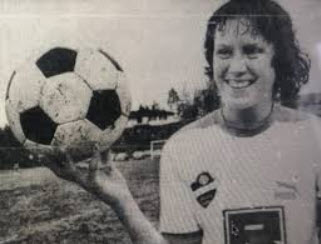
Definitely. The discipline, the drive to improve, never settling for “good enough” — all of that stayed with me. Playing team sports taught me to think about how the group can work better together. And in sports you learn you won’t be at your peak every single day. That’s a useful lesson for musicians. There’s a saying in conducting: “You’re only as good as your last concert.” I don’t like that. We’re human. Each performance will be different — and that is part of what makes it meaningful.
The theme you chose for the 2025 festival in July was “Dialogue,” which seems to echo your own sense of artistic curiosity — especially your interest in bridging past and present. How did that idea shape the way you approach programming?
I’m always curious. I want to understand how any music was first played and what the composer intended. In that sense, all music is contemporary. Whether it’s brand new or from the Baroque, I want to approach it with freshness.
Pairing works from different eras can reveal unexpected connections — or simply highlight their contrasts. Dialogue doesn’t mean everything must blend or agree. We don’t have to understand everything to value it. Sometimes a piece doesn’t speak to us — at least not now — and that’s fine. For me, dialogue is about multiple relationships: between early music and later generations — such as playing Jessie Montgomery on gut strings for a completely different sound world, or between performers and audiences, or within the ensemble itself.
You experimented with spatial elements in your performance of Bach’s B-minor Mass. What did you discover in doing that here in Carmel?
Carmel’s openness encourages me to try new things. For example, I asked the orchestra to play the first four bars of the Kyrie in the same tempo as the rest — Bach didn’t write it in half-time, though that’s become standard. We also placed the flutes in the middle of the auditorium, among the audience, for the Kyrie. Their sound unfolded from within the room before they returned to the stage. That’s what I love about live performance: responding to the space, the ensemble, and the moment as a shared act of discovery.
How would you describe your own relationship to historical performance?
Historically informed performances are extremely important as well as natural to me. I engage with instruments and tuning choices as much as possible. Period instruments have more “soul” between the notes. Modern equal temperament can smooth things out too much, sometimes at the expense of emotional depth. In the St. John Passion, Peter’s aria after betraying Jesus sounds painfully raw in period tuning — it’s in F-sharp minor, which feels unstable against the G minor context. That tension is part of the expression.
I also spend a lot of time with folk music, and many folk instruments are closely connected to historical ones. There’s a physicality to the sound that’s very alive, deepening my interest in what these instruments can express.
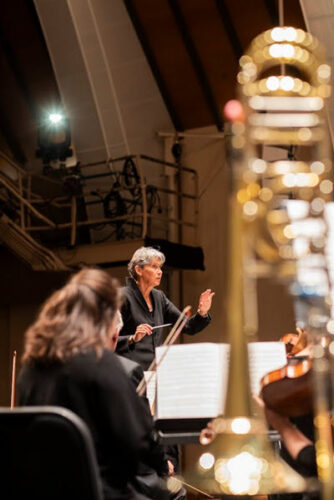
What has surprised you most about leading the Carmel festival?
Not so much surprise as gratitude that the musicians support each other wholeheartedly. They bring so much knowledge about repertoire and such a strong desire to play. The level of historically informed practice, in general, is very high in the U.S. One thing that really brought that home to me was performing Mahler’s Fourth Symphony and Grieg’s Piano Concerto using gut strings. I wasn’t sure how it would work, but it brought unexpected meaning to the music. That openness to exploring sound in different ways, even in repertoire not usually played on period instruments, impressed me.
One thing that’s very special here in Carmel is how close the audience feels. The space [in the main concert venue] creates a kind of intimacy that really affects how we play. I often ask the musicians to play their part as if they were a soloist — bring your full self into it — but also listen deeply. Listening is active, not passive. That’s the key.
On stage, it’s not just about precision and rhythm — it’s about responding to what you actually hear in the moment. It’s like the concept, in sports, of the “individual team player.” Everyone must be an individual and a team player at the same time. That balance allows us to create something meaningful together — and it’s a wonderful metaphor for life: give your best, be fully yourself — but make sure everyone else is okay, too.
Thomas May is a writer, critic, educator, and translator whose work appears in the New York Times, Gramophone, Strings, and other publications. Lucerne Festival’s English-language editor, he is also U.S. correspondent for The Strad and program annotator for the Ojai Festival and Los Angeles Master Chorale. A frequent contributor to EMA, he’s written about Climate Change & Early Music.


